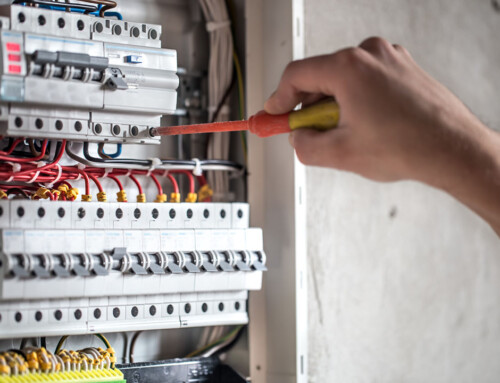Table of Contents
So, picture this – You are in the middle of cooking supper when it happens. The lights in your kitchen begin to flicker, and before you know it, half of the room is black. Yes, it sounds like you are dealing with a blown fuse in house. But don’t worry. Changing a blown fuse is actually a relatively simple DIY procedure.
This article is here to throw some light (pun intended) on how to address this frequent home issue. However, an essential reminder before going ahead is that safety comes first when dealing with electricity!
What is a Fuse, and What is its Purpose? What Happens When It Blows?
So, before delving into the realm of fuse-fixing, let’s learn the basics! A fuse is a small yet crucial component in electric circuits. Its primary function is to safeguard the circuit against overcurrent conditions, which might cause damage or possibly start a fire.
When the current exceeds the fuse’s rating, it blows (or “trips”), breaking the circuit and cutting off the flow of power. This action avoids additional harm. Thus, it’s like a tiny superhero protecting your electrical system.
When a fuse blows, the electrical equipment or system it protects stops operating. But don’t panic; it’s a sign that the fuse is working correctly and alerting you to the reason for the overcurrent problem.
How to Fix a Blown Fuse – Step-by-step Procedure
Step 1: Identifying a Blown Fuse
When it comes to dealing with electrical issues in your home, it’s essential to know how to identify a blown fuse. The first step is to locate your fuse box or circuit breaker. In modern homes, you find circuit breaker panels with switches. Older houses may have fuse boxes with screw-in fuses. These are typically situated in a garage, basement, or utility area.
To spot the culprit, look for signs of discoloration on the fuse, such as blackening or cloudiness. Additionally, inspect the fuse for a broken wire by examining the metal wire inside the fuse’s glass casing. To further troubleshoot, plug a lamp into outlets in the affected area to determine which circuit the fuse controls.
Once you’ve identified a blown fuse, it’s time to move on to step 2.
Step 2: Replacing a Fuse
Safety should always be the top priority when working with electrical components. Start by turning off the main power switch at the top of your fuse box to cut off electricity to the entire house. Using a flashlight helps you see clearly as you work.
Here’s a step-by-step guide to replacing a blown fuse in house:
- Unscrew the blown fuse as you would a light bulb.
- Ensure that you obtain the right replacement fuse with the exact same amperage rating. It is usually labelled on the fuse itself. Using the wrong amperage can pose a fire hazard.
- Carefully screw in the new fuse.
- Restore power by turning the main switch back on and testing to see if the lights or appliances are functioning correctly.
Step 3: Resetting a Tripped Circuit Breaker (If Applicable)
If your home is equipped with circuit breakers, resetting a tripped circuit follows a slightly different procedure. Circuit breakers function similarly to fuses but have a switch that flips in case of an overload.
Here’s how to perform an easy reset:
- Turn off lights and appliances on the affected circuit.
- Locate the tripped breaker, which is in a different position than the rest. You can find it sometimes halfway between ON and OFF.
- Switch it entirely OFF, then firmly back ON.
Now you know how you can fix a blown fuse! Isn’t it empowering? However, always remember that safety is paramount. While you can restore power to your home with the correct approach, don’t hesitate to call an electrician when problems seem beyond a simple DIY fix.
By following these steps and knowing when to seek professional help, you can maintain a safe and functional electrical system in your home.
When to Call an Electrician?
- If a fuse keeps blowing, there’s likely a deeper electrical problem.
- Sparks or burning smells indicate serious issues – call a professional immediately.
- Electrical work can be complex and dangerous. So, if you are unsure, seeking help is perfectly fine.
FAQ’s
- What is a Fuse?
A fuse is a critical safety device that protects electrical circuits by shortening the circuit if too much electricity flows through it. A fuse is a narrow strip made up of metal having a low melting point. When connected in series with the circuit, it safeguards the fuse’s purpose of interrupting the circuit when the current flowing through it exceeds a certain threshold.
- How do you tell if a fuse is blown?
To verify whether a fuse has blown, check the metal filament within the fuse or use a multimeter to test its continuity. If the filament seems fractured upon eye inspection or if the multimeter indicates no continuity, the fuse has blown. To ensure that your electrical gadgets operate safely and optimally, any blown fuses must be replaced immediately.
- How to Test a Fuse?
To test a fuse, first set the multimeter to continuity test mode. Next, attach the multimeter leads to the fuse’s metal ends. If the multimeter shows continuity, the fuse is still working. If the multimeter shows no continuity, it indicates that the fuse has blown and needs to be replaced.






